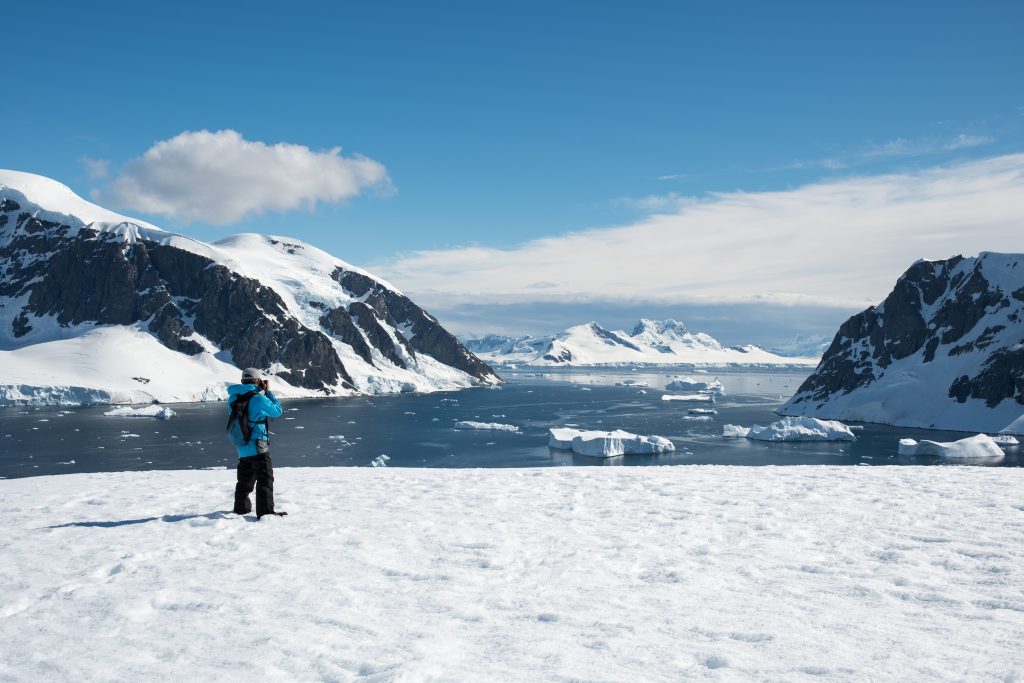Voyage Overview
Explore one of the most remote areas on Earth on this adventurous small ship expedition.
Starting in South Georgia after leaving Ushuaia, we will be on the trail of famed polar explorer Ernest Shackleton and his ship Endurance, experiencing the Weddell Sea’s amazing wildlife and tabular icebergs before returning via Elephant Island.
The continental borders of the Weddell Sea are formed by huge floating sheets of ice. These ice shelves produce the massive tabular icebergs that are so abundant in the Weddell Sea. Scientists have declared the waters of the Weddell Sea to be the clearest water of any sea on Earth. The tabular icebergs and other ice formations offer fantastic landscapes and unique photo opportunities. Especially on the east side of the Weddell, the chance of landings can be limited due to these ice formations. Zodiac cruises and possible ice landings are wonderful alternatives, if conditions allow. The ship has helicopters and may offer helicopter transfers to shore / landing sites if the conditions allow.
The Weddell Sea is home to a large number of orcas, humpbacks, and minke whales as well as leopard, Weddell, and crabeater seals. Several penguin species can be seen there too. On the ship, our structured educational program will complement other activities. You will have the opportunity to attend several lectures on a variety of topics, such as wildlife, landscape, history, and more.
Trip Details
Duration: 28 Days
Ship: Ortelius, Expedition Ship, 108 Guests
Start: Ushuaia, Argentina
End: Ushuaia, Argentina
Highlights:
- 3 planned days in South Georgia, 1 day South Sandwich Islands & 13 days in Antarctica
- See an incredible amount of king penguins, seals and albatross in South Georgia
- Have the chance to visit Shackleton’s grave at Grytviken
- Spend almost two weeks exploring rarely visited sites in the remote & icy Weddell Sea
- Cross the Antarctic Circle

Trip Itinerary Overview:
Day 1: Embarkation in Ushuaia, Argentina
Days 2-3: At Sea
Days 4-6: South Georgia
Days 7-8: At Sea
Day 9: South Sandwich Islands
Days 10-12: At Sea
Days 13-14: Neuschwabenland / New Swabia
Days 15-23: Deep Inside the Weddell Sea
Day 24: Antarctic Sound
Day 25: Elephant Island
Days 26-27: Drake Passage
Day 28: Disembark in Ushuaia, Argentina
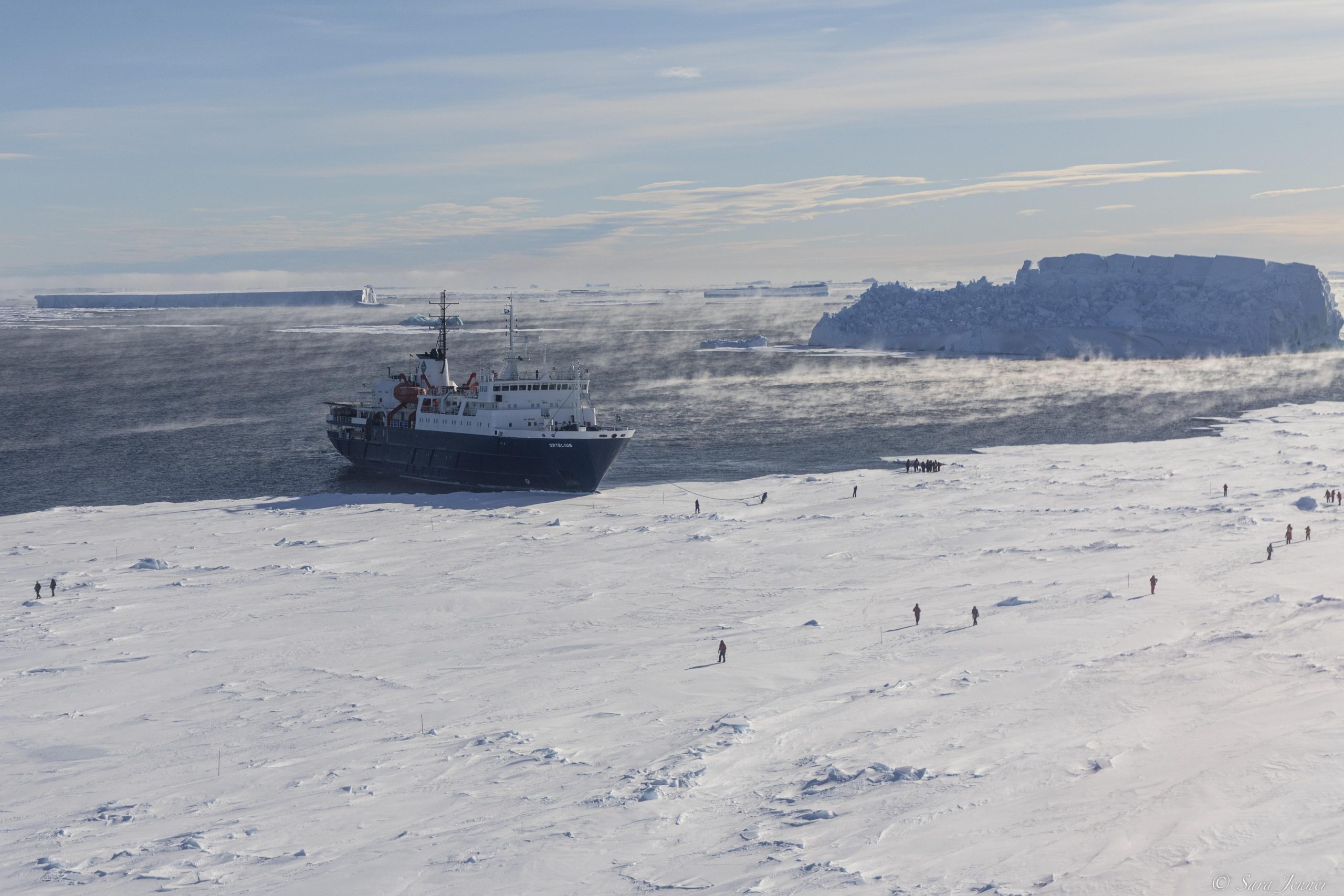
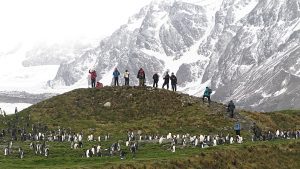

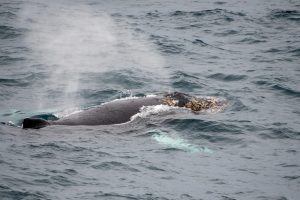
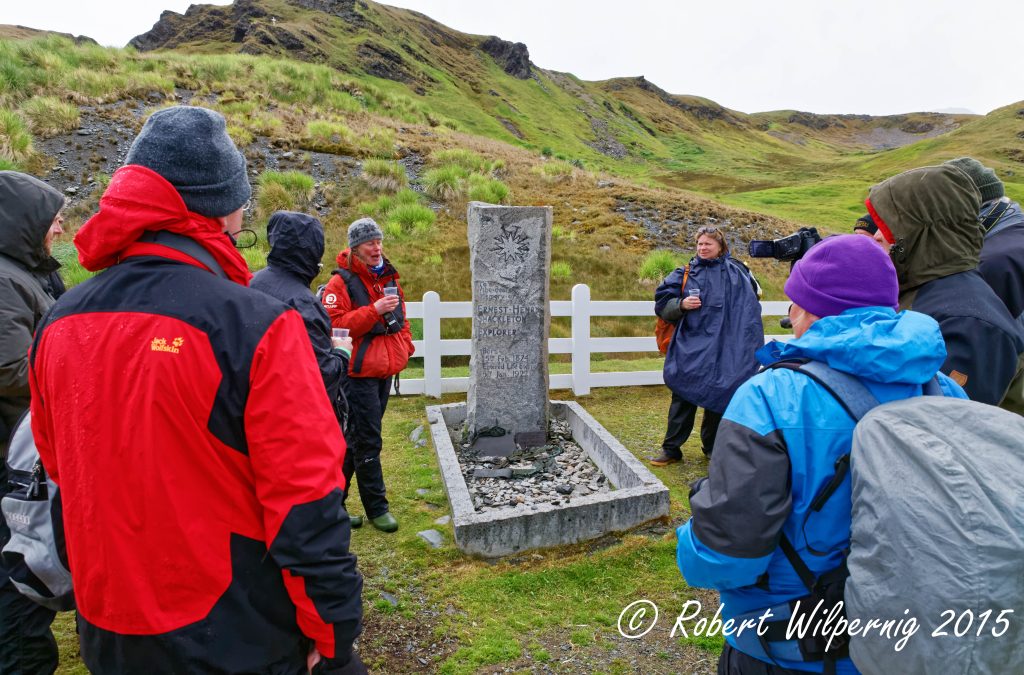
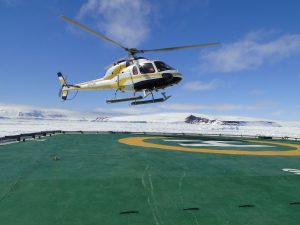
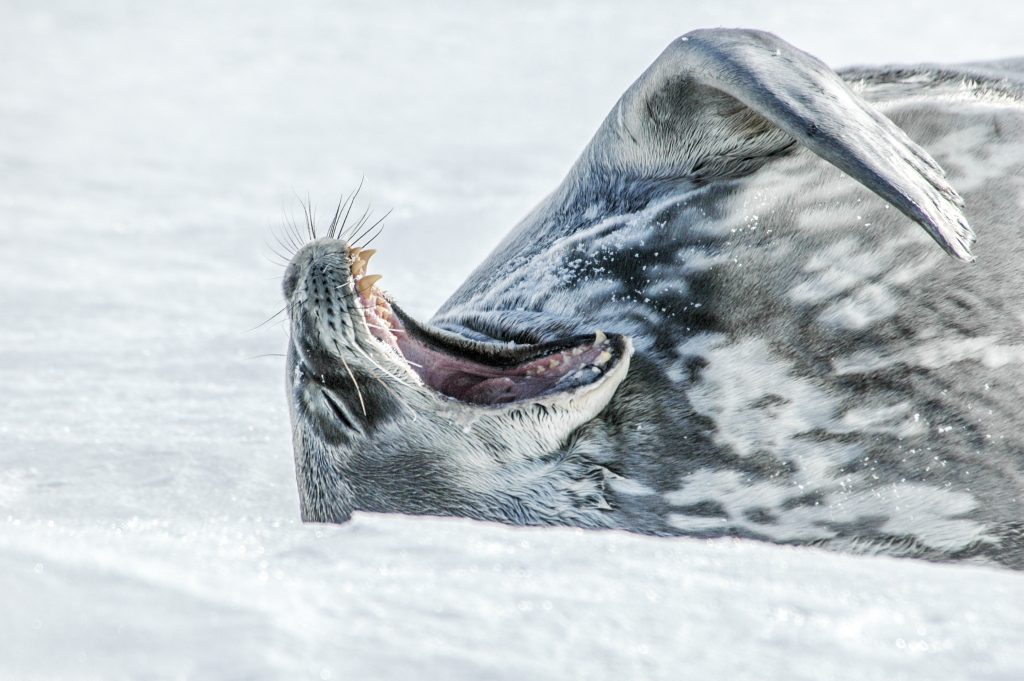
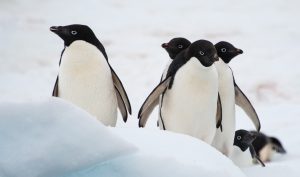
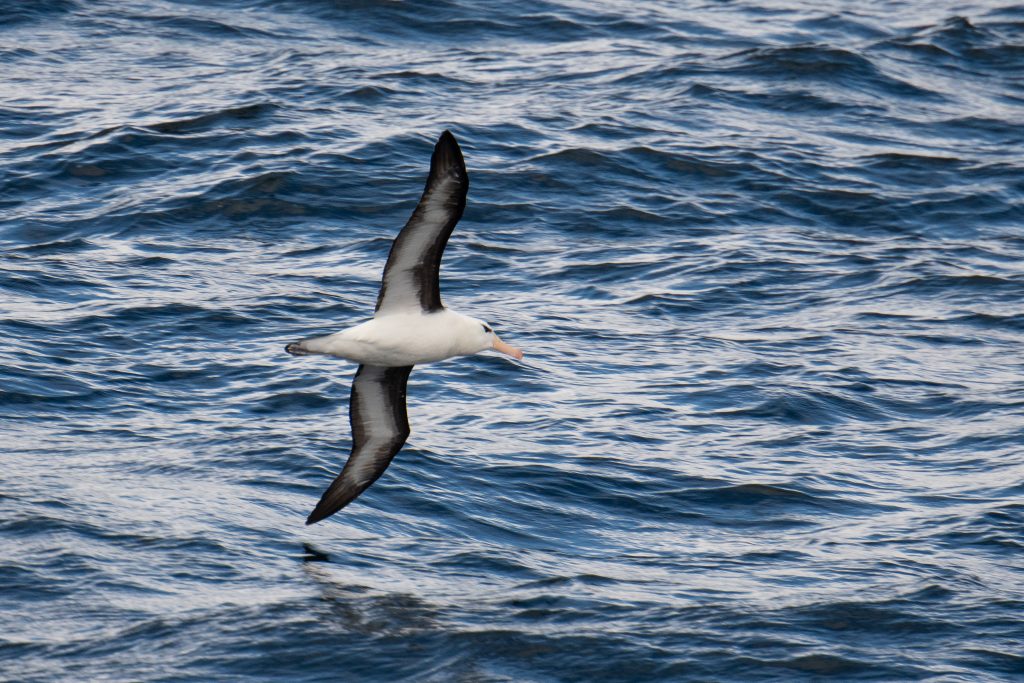
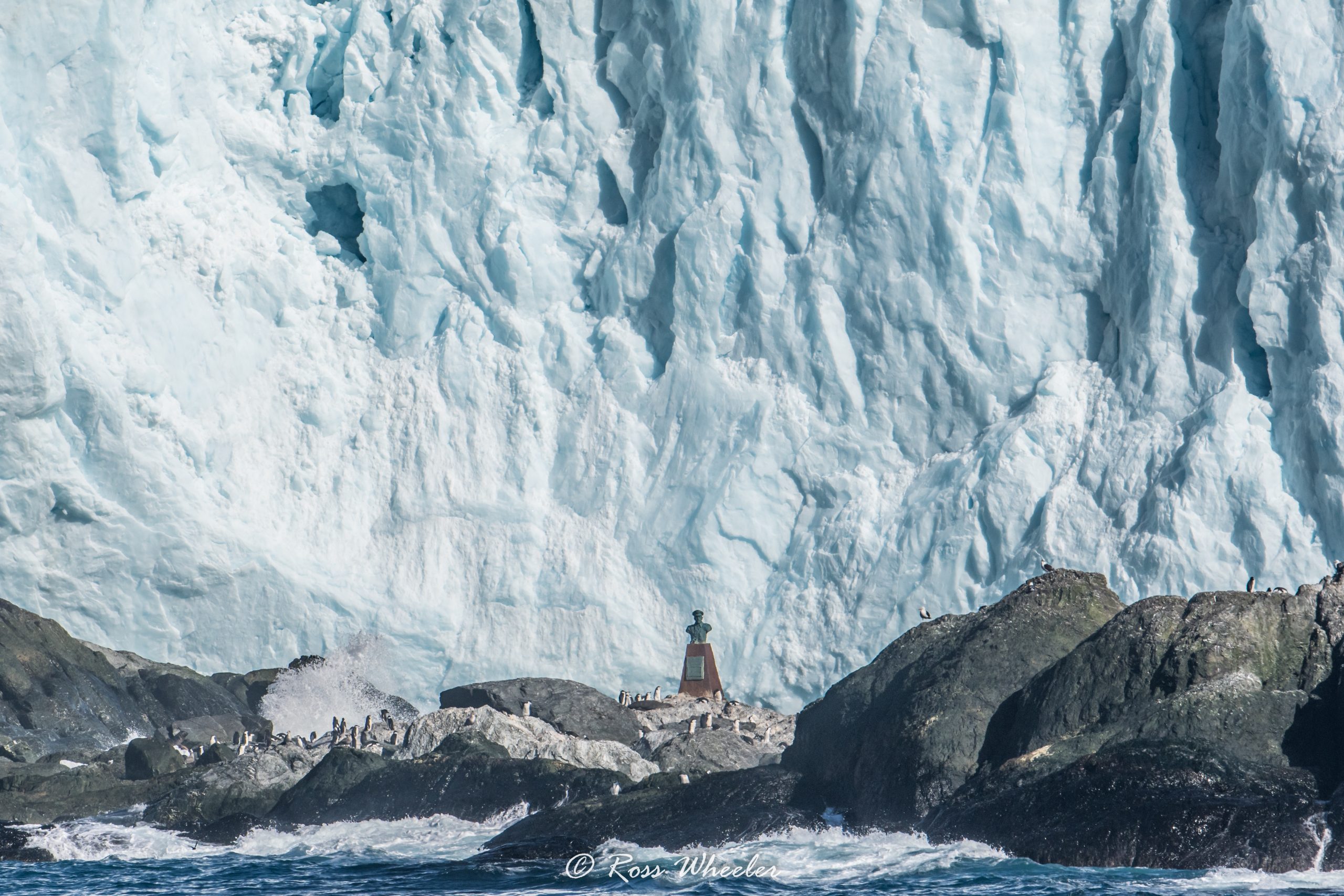
Tour Dates
| Dates | Availability | |
|---|---|---|
Jan 22 – Feb 18, 2026 (28 days) | Very Limited | view pricing chart |
| Dates | Availability | |
|---|---|---|
Feb 7 – Mar 6, 2027 (28 days) | Available | view pricing chart |
Itinerary
During this, we transfer our passengers to shore using Zodiacs and operate helicopters in areas where Zodiacs cannot be used. If conditions allow for helicopter transfers, we will attempt landings on both land and sea ice. Our plan is to make helicopter landings when possible, though we cannot guarantee a specific amount of helicopter time in advance. Helicopters provide a great advantage in reaching certain landing sites that are otherwise almost inaccessible, but local conditions (weather, ice, and other forces of nature) determine the final itinerary. These conditions may change rapidly, impacting our ability to use helicopters. Please understand and accept this. Safety is our greatest concern, and no compromises can be made. The vessel is equipped with three helicopters. One helicopter always needs to be supported by a second functioning helicopter. No guarantees can be given, and in no event will claims be accepted.
Day 1: Embarkation from Ushuaia, Argentina
Your voyage begins where the world drops off. Ushuaia, Argentina, reputed to be the southernmost city on the planet, is located on the far southern tip of South America. Starting in the afternoon, you embark from this small resort town on Tierra del Fuego, nicknamed “The End of the World,” and sail the mountain-fringed Beagle Channel for the remainder of the evening.
Day 2-3: At Sea
Enroute to South Georgia, you now cross the Antarctic Convergence. The temperature cools considerably within the space of a few hours, and nutritious water rises to the surface of the sea due to colliding water columns. This phenomenon attracts a multitude of seabirds near the ship, including several species of albatross, shearwaters, petrels, prions, and skuas.
Day 4-6: South Georgia
Entering the South Georgia Maritime Zone, one of the largest protected waters in the world, we sail past the Shag Rocks. These impressive rocks lay 240km (150 miles) west of South Georgia and are home to several thousand South Georgia shags. The area around the rocks is known for its abundance of larger marine mammals, which feed on this comparatively shallow area of the South Georgia Ridge.
After reaching South Georgia, you will have the chance to visit some of the following sites:
Fortuna Bay – A beautiful outwash plain from Fortuna Glacier is home to a large number of king penguins and seals. Here you may also have the chance to follow the final leg of Shackleton’s route to the abandoned whaling village of Stromness. This path cuts across the mountain pass beyond Shackleton’s Waterfall, and as the terrain is partly swampy, be prepared to cross a few small streams.
Salisbury Plain, St. Andrews Bay, Gold Harbour– These sites not only house the three largest king penguin colonies in South Georgia, they’re also three of the world’s largest breeding beaches for Antarctic fur seals. Literarily millions breed on South Georgia during December and January. By February the young fur seals are curious and playful and fill the surf with life and fun and large elephant seals come to the beaches to moult.
Grytviken – In this abandoned whaling station, king penguins walk the streets and elephant seals lie around like they own the place – because they basically do. Here you might be able to see the South Georgia Museum as well as Shackleton’s grave.
In the afternoon of day 6 and depending on the conditions, we will start sailing southwards in the direction of the South Sandwich Islands.
Day 7-8: At Sea
Like Shackleton in December 1914 on the Imperial Trans-Antarctic Expedition, also known as the Endurance Expedition, we leave South Georgia and aim for the South Sandwich Islands and the Weddell Sea. There may be sea ice on this route, and at the edge of the ice some south polar skuas and snow petrels could join the other seabirds trailing the vessel south.
Day 9: South Sandwich Islands
While we are unable to land here, we may be able to make a Zodiac cruise among the amazing scenery of this active volcanic area. Passing between Thule and Cook Islands will be one of the trip’s many highlights and will make an everlasting impression. There is a good chance we’ll encounter humpback and minke whales in this area. On and around the islands, we also have the chance to spot brown skuas, chinstrap or Adélie penguins, and several species of albatross: grey-headed, black-browed, and wandering.
Day 10-12: At Sea
We next sail toward the Antarctic continent in the direction of Queen Maud Land and Neuschwabenland (New Swabia) on the northeast side of the Weddell Sea.
Day 13-14: Neuschwabenland / New Swabia
Our first destination in Antarctica is New Swabia, between 20°E and 10°W in Queen Maud Land. This area was explored by Germany during the third German Antarctic Expedition of 1938 – 1939, led by Alfred Ritscher. The purpose was to find an area in Antarctica for a German whaling station and scout a possible location for a naval base. In an attempt to claim the region, Nazi flags were placed on the sea ice along the coast locations. Survey flights also airdropped aluminum arrows with swastikas.
Day 15-23: Deep Inside the Weddell Sea – Filchner, Ronne & Larson Ice Shelves
Sailing deep into the Weddell Sea, chances are we can spot crabeater, leopard, or Weddell seals. If we are lucky, we might even see emperor penguins. Humpback, orca, and minke whales are also present in this area, along with various birdlife. Ice conditions in the Weddell Sea vary seasonally. We will encounter a vast nautical wilderness of sea, and while heading to high latitudes (far south) will enjoy the raw beauty and power that makes Antarctica so special. It will become apparent why it took so long to discover the Great White Continent and how tough it must have been for Shackleton’s expedition.
We’ll make a circular route toward the Brunt Ice Shelf and along the Luitpold Coast, discovered and named during the second German Antarctic expedition (1911 – 1912) of Wilhelm Filchner. If conditions allow, we will have opportunities for a Zodiac cruise and possibly an ice floe landing.
We now head west toward the Filchner–Ronne Ice Shelf before changing course north, following the coast along the eastern side of the Antarctic Peninsula and Larsen Ice Shelf. This brings us close to the spot where Shackleton’s vessel Endurance was trapped in pack ice during his Imperial Trans-Antarctic Expedition (1914-17), drifting toward the Antarctic Peninsula before ultimately sinking. In an exciting conclusion to this story, the wreck was discovered on March 5, 2022, the 100th anniversary of Shackleton’s burial, after 107 years below the Weddell Sea waves. While we can’t get close to the discovery site due to pack ice, we will be in the area where the ship was trapped and abandoned. There are colonies of 6,500 emperor penguins nearby, so we hope to see one or more in this area.
As we reach the northern section of the Antarctic Peninsula, we enter the area of Erebus and Terror Gulf. Far-wandering emperor penguins often perch on Snow Hill Island’s numerous ice floes, possibly offering you another opportunity to spot these emblematic creatures. If conditions allow, we may attempt a landing on James Ross Island.
Day 24: Brown Bluff & Kinnes Cove
This morning we hope to land at one of the most scenic locations in the northern Antarctic Continent, with a large Adélie penguin rookery, gentoo penguins, and nesting snow petrels also to be found. Sheer canyon walls, fallen boulders, and beautiful volcanic creations capped with ice make Brown Bluff a truly unforgettable location. Across the Antarctic Sound is Kinnes Cove, where you can see the nearby Madder Cliffs with their subtle red coloration as well as possible gentoo penguins.
Day 25: Elephant Island
This is the starting point from which Shackleton left to find help for his stranded crew. Using only a small lifeboat, the James Caird, he and five of his men sailed to South Georgia, then walked 36 hours to Stromness. It’s hard not to marvel at how they accomplished that herculean feat. Twenty-two members of his Imperial Trans-Antarctic Expedition, also known as the Endurance Expedition, were stranded on Elephant Island after their vessel Endurance sank in the Weddell Sea. It took four and a half months to complete the legendary rescue. Conditions on Elephant Island are severe. The coastline is mostly made up of vertical rock and ice cliffs highly exposed to the elements. If possible, you will take the Zodiacs to Point Wild, where the marooned members of Shackleton’s expedition miraculously managed to survive.
Day 26-27: Drake Passage
Your return voyage is far from lonely. While crossing the Drake, you’re again greeted by the vast array of seabirds remembered from the passage south. But they seem a little more familiar to you now, and you to them.
Day 28: Disembarkation in Ushuaia
Today you disembark in Ushuaia, taking home priceless memories that will accompany you wherever your next adventure lies.
PLEASE NOTE: All itineraries are for guidance only. Programs may vary depending on ice, weather, and wildlife conditions. Landings are subject to site availabilities, permissions, and environmental concerns per IAATO regulations. Official sailing plans and landing slots are scheduled with IAATO prior to the start of the season, but the expedition leader determines the final plan. Flexibility is paramount for expedition cruises. The average cruising speed for our vessel is 10.5 knots.
Trips & Rates
Please note, rates are Per Person in USD
Availability & prices are subject to change at anytime
Feb 7 – Mar 6, 2027 (28 days)
| Start: | Ushuaia, Argentina |
| End: | Ushuaia, Argentina |
| Cabin Category | Quad Porthole | Triple Porthole | Twin Porthole | Twin Window | Twin Deluxe | Superior |
|---|---|---|---|---|---|---|
| Per Person Price in USD | $27,700 | $34,450 | $34,450 | $36,200 | $39,400 | $40,750 |
| Availability | Limited | Full | Open | Open | Limited | Open |
Jan 22 – Feb 18, 2026 (28 days)
| Start: | Ushuaia, Argentina |
| End: | Ushuaia, Argentina |
| Cabin Category | Quad Porthole | Twin Porthole | Twin Window | Twin Deluxe | Superior |
|---|---|---|---|---|---|
| Per Person Price in USD | $26,500 | $33,000 | $34,600 | $37,000 | $39,000 |
| Discount | Save $8250 | Save $8650 | |||
| Discounted Per Person Price | $26,500 | $24,750 | $25,950 | $37,000 | $39,000 |
| Availability | Limited | Open | Limited | Full | Full |
Voyage Ship
Ortelius
Ortelius was built in 1989 and originally served as a research vessel. She was later converted into an expedition cruise ship taking adventurous travelers to the Arctic & Antarctic. With the highest ice class, comfortable cabins, ample deck space and a maximum of just 108 guests, Ortelius is one of the most authentic small expedition cruise ships sailing in the Polar regions.
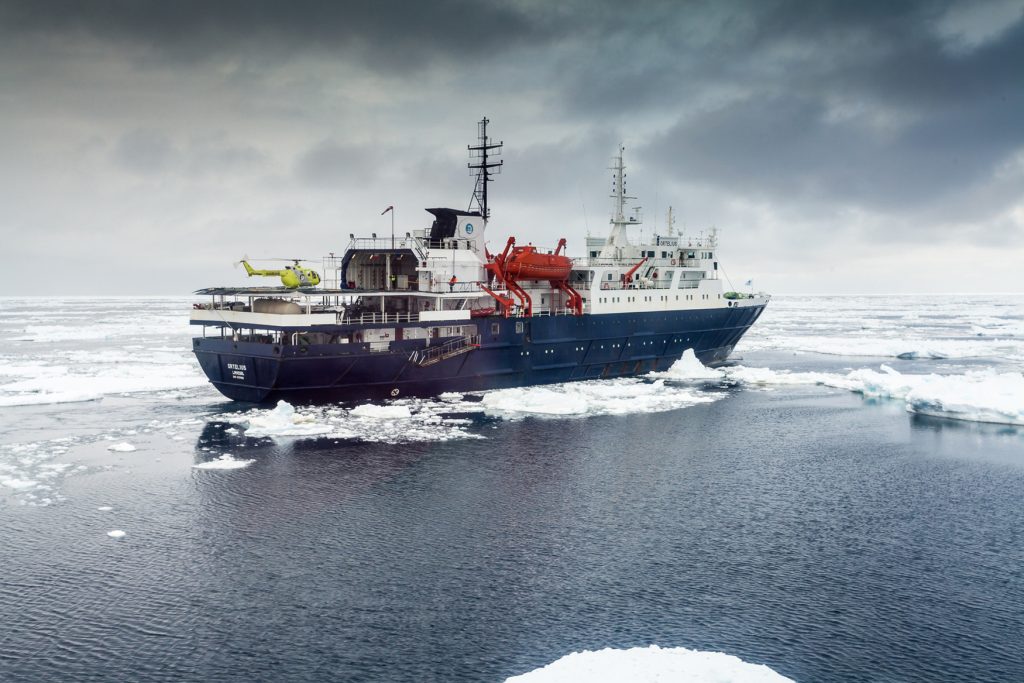
Ortelius Cabins & Deck Plan
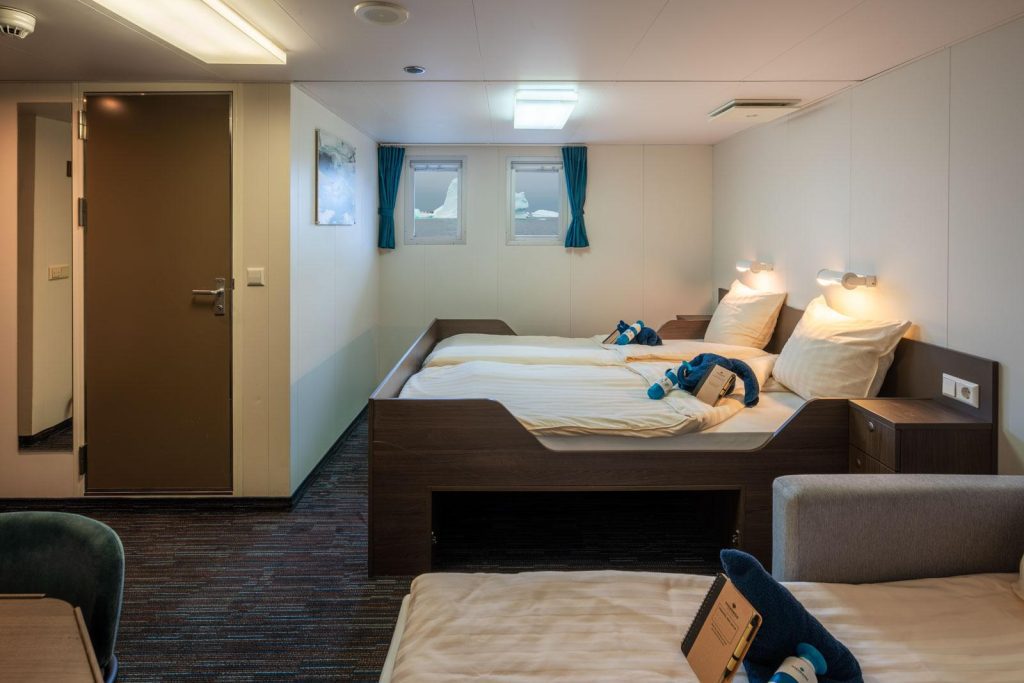
Superior
DECK 5
The 6 Superior cabins are the most spacious and the only cabin category with a double bed. They are all located on deck 5. Features: 2 windows (minimum), 1 double bed, 1 single (sofa) bed, Private shower & toilet, Desk & chair, Flatscreen TV, Telephone & WiFi (supplemented), Refrigerator, Coffee & tea maker, Hair dryer, Safe deposit box and Ample storage space.
198 – 220 sq. ft. (18.4 – 20.4m2)
1-3
1 double + single sofa bed
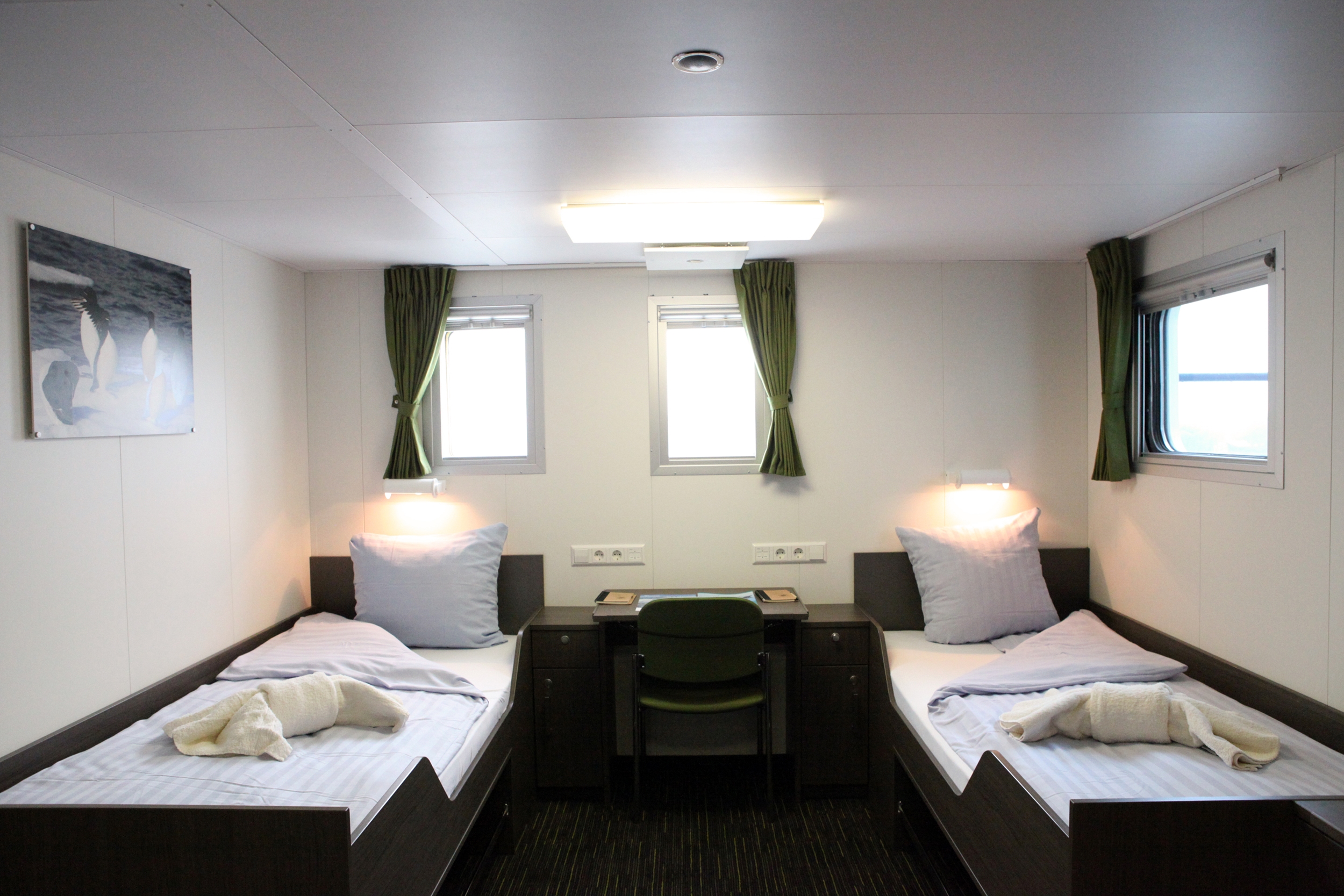
Twin Deluxe
DECK 5
There are just 2 Twin Deluxe cabins located on deck 5. Features: 3 windows, 2 lower berths, Private shower & toilet, Desk & chair, Small sofa, Refrigerator, Coffee & tea maker, Flatscreen TV, Telephone & WiFi (supplemented), Hair dryer, Safe deposit box and Ample storage space.
190 sq. ft. (17.7 m2)
1-2
2 single
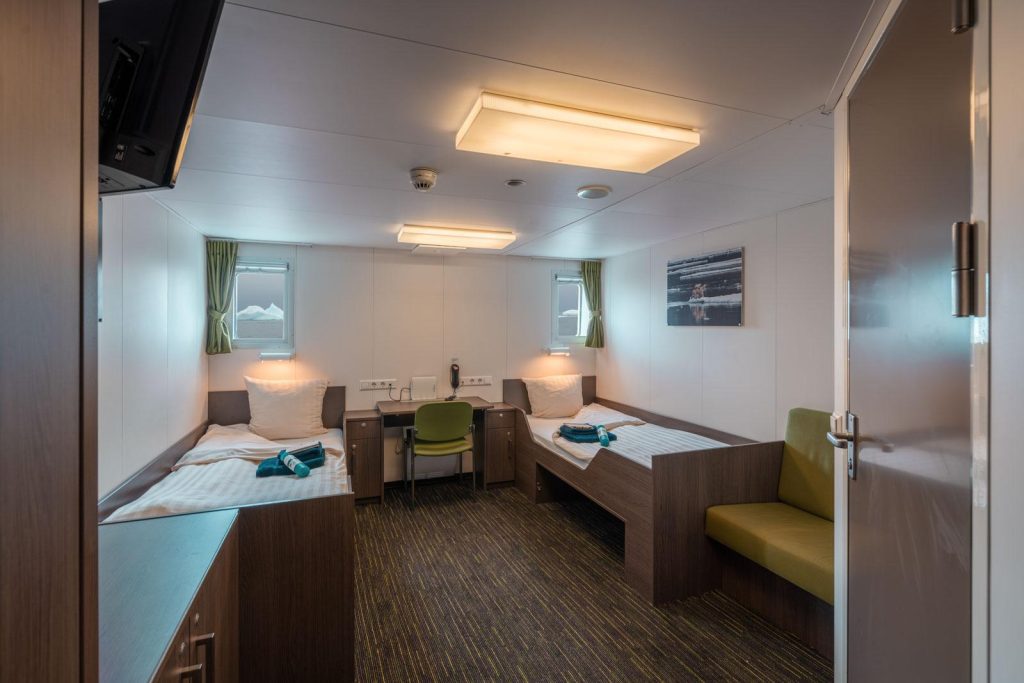
Twin Window
DECK 5
The 12 Twin Window cabins are all located on deck 5. Features: 2 windows, 2 lower berths, Private shower & toilet, Desk & chair, Flatscreen TV, Telephone & WiFi (supplemented), Hair dryer, Safe deposit box and Ample storage space.
188 – 190 sq. ft. (17.5 – 17.7 m2)
1-2
2 single
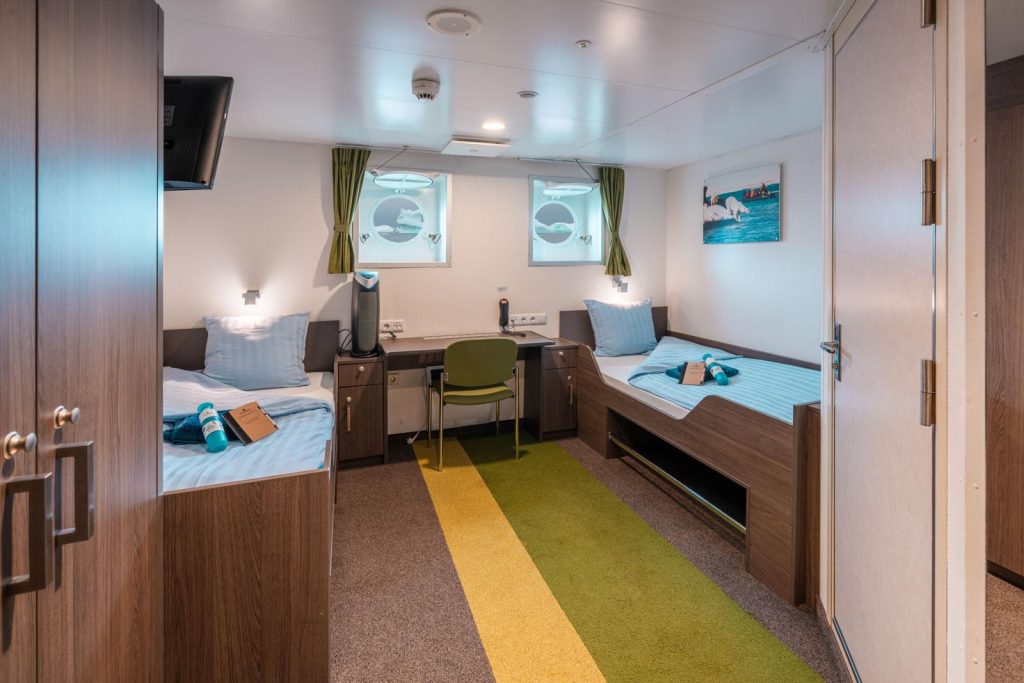
Twin Porthole
DECK 3
DECK 4
The most abundant cabin category, most of which are located on deck 4 (there are 2 on deck 3). Features: 2 portholes, 2 lower berths, Private shower & toilet, Desk & chair, Flatscreen TV, Telephone & WiFi (supplemented), Hair dryer, Safe deposit box and Ample storage space.
123 – 163 sq. ft. (11.4 – 15.1 m2)
1-2
2 single
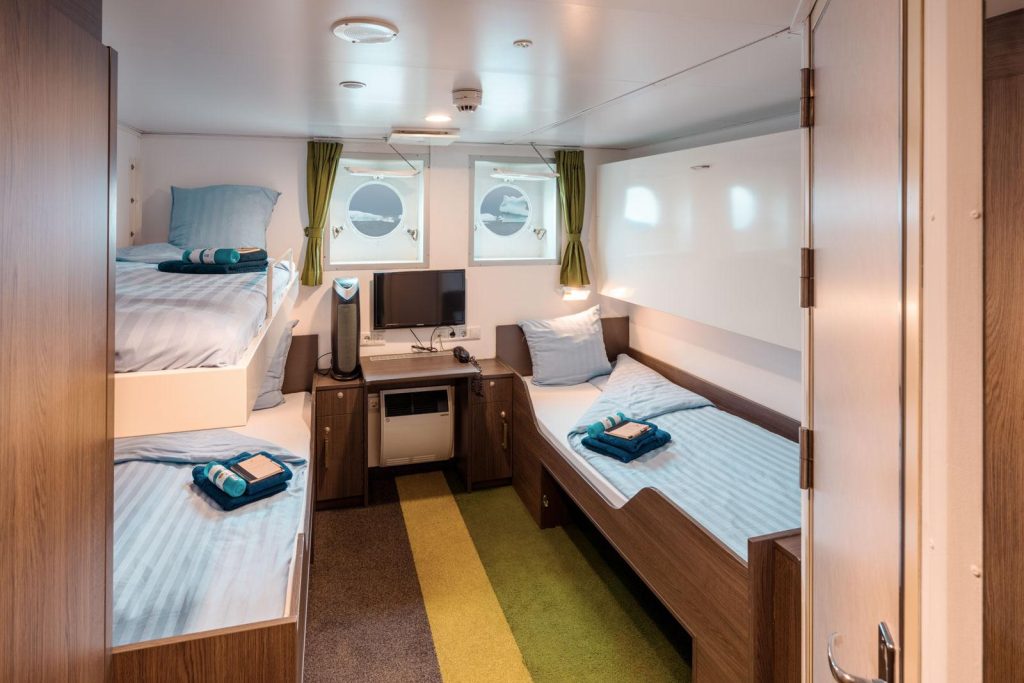
Triple Porthole
DECK 3
2 Triple cabins located forward on deck 3. Features: 2 portholes, 1 upper berth & 2 lower berths, Private shower & toilet, Desk & chair, Flatscreen TV, Telephone & WiFi (supplemented), Hair dryer, Safe deposit box and Ample storage space.
1-3
3 single
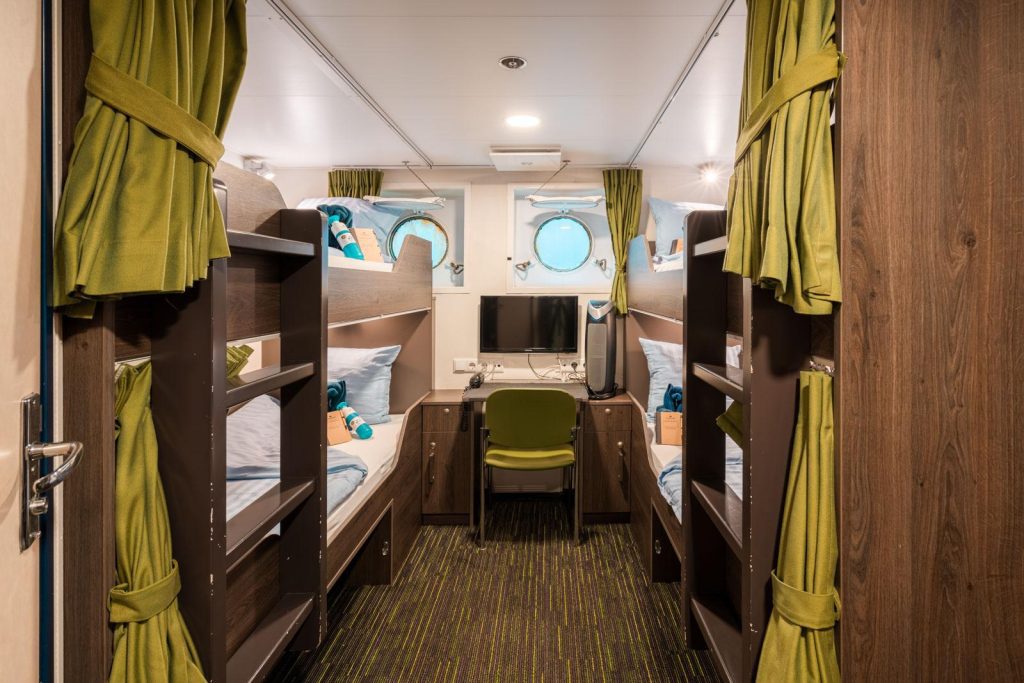
Quadruple Porthole
DECK 3
4 Quad cabins midship on deck 3. Features: 2 portholes, 2 upper berths & 2 lower berths, Private shower & toilet, Desk & chair, Flatscreen TV, Telephone & WiFi (supplemented), Hair dryer, Safe deposit box and Ample storage space.
133 – 152 sq. ft. (12.4 – 14.1 m2)
1-4
4 single
Inclusions/Exclusions
Inclusions:
- Voyage aboard the indicated vessel as indicated in the itinerary
- All meals throughout the voyage aboard the ship including snacks, coffee and tea.
- All shore excursions and activities throughout the voyage by Zodiac.
- Program of lectures by noted naturalists and leadership by experienced expedition staff.
- Free use of rubber boots and snowshoes.
- Luggage transfer from pick-up point to the vessel on the day of embarkation, in Ushuaia.
- Pre-scheduled group transfer from the vessel to the airport in Ushuaia (directly after disembarkation).
- All miscellaneous service taxes and port charges throughout the programme.
- Comprehensive pre-departure material.
Exclusions:
- Any airfare, whether on scheduled or charter flights
- Pre- and post- land arrangements.
- Passport and visa expenses.
- Government arrival and departure taxes.
- Meals ashore.
- Baggage, cancellation and personal insurance (which is strongly recommended).
- Excess baggage charges and all items of a personal nature such as laundry, bar, beverage charges and telecommunication charges.
- The customary gratuity at the end of the voyages for stewards and other service personnel aboard (guidelines will be provided).
Solo Travelers
Are you traveling alone? Solo travelers have the following options.
- Book into a share cabin in the following categories: Quad Porthole, Triple Porthole, Twin Porthole, Twin Window & Twin Deluxe
- Book a twin cabin at solo occupancy at 1.7x the per person share price
